offline
- nelsa

- Super građanin
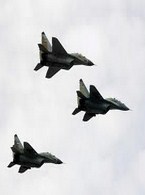
- Pridružio: 21 Sep 2011
- Poruke: 1118
|
Napisano: 16 Okt 2012 18:49
 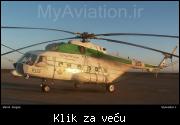 
  
  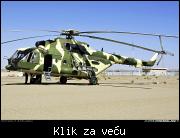
  
  
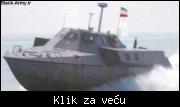  
  
  
  

Dopuna: 18 Okt 2012 22:37
U.S. Navy, Allies Find Less Than Half the Sea Mines Planted in Key Exercise
BY: DANIEL SAGALYN
Below the flight deck of the USS Enterprise, one of the aircraft carriers that participated in the mine hunting exercise in September. Photo by Dan Sagalyn
A major international naval exercise last month in and around the Persian Gulf and Arabian Sea, led by the U.S. Navy with more than 30 other nations participating, located fewer than half of the practice mines laid at sea.
This outcome of the highly publicized military drills — not publicly known until now — underscores how difficult it may be for the United States and its partners to detect and incapacitate waterborne explosive devices that Iran has threatened to plant if its nuclear facilities come under attack.
Out of the 29 simulated mines that were dropped in the water, “I don’t think a great many were found,” retired Navy Capt. Robert O’Donnell, a former mine warfare director for his service, told the NewsHour. “It was probably around half or less.”
Navy officials, though, said the drill was constructive and asserted that focusing on the number of mines detected alone would paint an incomplete picture.
“We enjoyed great success,” said Cdr. Jason Salata, the top public affairs officer for the 5th Fleet. “Every platform that was sent to find a shape found a shape. We stand by that.” Salata asserted that “there were no missed mines, each platform that had an opportunity to find the mine did so.”
The drill, dubbed International Mine Countermeasures Exercise 2012 or IMCMEX, brought together countries from all over the world at a time when tensions with Iran have been heating up. Tehran has threatened to close the Strait of Hormuz, one of the world’s most important choke points through which 20 percent of the world’s oil flows.
The surprising mine-detection result came in what one senior Navy official told the NewsHour was “one of the most significant and strategically important exercises of the year.” It was also the largest exercise of its kind ever held in the region.
Being able to find and destroy sea mines is critical to maintaining stable world oil prices and global economic growth.
“The Strait [of Hormuz] remains a vital sea lane of communications to us and our partners,” Defense Secretary Leon Panetta said earlier this year. “We are determined to preserve freedom of transit there in the face of Iranian threats to impose a blockade.”
“I just felt that they should have done better,” said O’Donnell, clearly disappointed with the outcome of this key measure of performance. “That’s the point of the exercise, to do mine-countermine [operations] in an area, and to find the mines.”
Now a consultant, O’Donnell was invited by the Navy to observe the September exercise firsthand as it unfolded.
The Navy declined to provide data on how many practice mines were located during the two-week naval drill but did not dispute that less than half were found. However, a spokesman insisted that the figures do not tell the whole story and that the event was “‘not just about finding” the dummy mines.
“Numbers alone do not tell the story of IMCMEX’s effectiveness and success,” said Lt. Greg Raelson, a media officer with the 5th fleet, stationed in Bahrain. “We operated ships, helicopters, divers, and unmanned undersea vehicles with accuracy and effectiveness, confirming our ability to respond to maritime mine threats in the undersea environment. Because of this exercise, we were able to enhance partnerships and further hone the international community’s ability to ensure the safe and free flow of navigation.”
However, some analysts with extensive experience in evaluating Navy mine exercises say the rate of success in detecting practice mines is critically important.
“I would be surprised if the post-exercise analysis didn’t include some kind of a scoring mechanism of how well did we do against this set” of imitation mines, said Scott Savitz, a senior RAND engineer who, in a prior job, led Navy-contracted teams to analyze counter-mine exercises. The central point of a mine-hunting exercise is “to find them all, because in the real-world scenario you want to minimize the subsequent mine risk,” he said.
“You want to try to ascertain how well you are doing. You need a find a certain number of mines and a certain number of attempts to hunt or sweep them in order to get anything statistically meaningful,” Savitz said. “If we get zero or one or two, it doesn’t tell us much. It’s not granular enough.”
During the exercise, the military’s top commander of U.S. Naval forces in the Middle East stressed two key objectives for the drill: To practice working together with other countries, and to find simulated mines.
On board the USS Ponce, the command ship for mine hunting operations in the Persian Gulf, sailors practice using surveillance equipment. Watch this video to see the unmanned aerial vehicle called Scan Eagle land by snagging a cable with its wing. The camera in the aircraft feeds back video to sailors who watch for threatening boats.
“This exercise is about getting the mines of out the water, and making sure people can sail through the Strait of Hormuz,” Vice Adm. John Miller, the commander of the U.S. Navy’s 5th Fleet, told reporters in Bahrain as the exercise was getting under way. “And what it’s really about is the opportunity to operate together in an international coalition and to make sure we can complete all the tasks that need to be completed.”
The top U.S. combatant commander for the region last month said the exercise was intended to realistically simulate possible military scenarios.
“We train as you do the real thing,” said Gen. James Mattis, the commander of U.S. military forces in the Middle East said while onboard a command-and-control vessel, USS Ponce, during the exercise. “You’ve got to train the same way that you operate every day at sea.”
One of the Navy spokesmen asserted last week that the military did not intend to go after all the mock mines laid for the exercise, much as an individual might focus a session at the gym on selected pieces of equipment but skip those that are unnecessary.
“My trainer builds me a workout,” said Salata. “Perhaps my trainer does not want me to work on some of the equipment. Maybe I don’t have enough time to get to all of the equipment. But based on my expectations, and the objectives of the session, I still may have an amazing workout and enjoy great success.”
Likewise, in terms of last month’s exercise, he said, “the number of shapes found vs. the number of shapes laid does not tell a clear story.”
Savitz, the RAND engineer, said a selective approach to testing counter-mine readiness might indeed have been appropriate for last month’s drill.
“If the goal is to do some of the monkey bars and then…we have something else that is in a slightly different environment and we are going to be testing your skills in that,” he said, the exercise approach might have given participating nations “a broad sampling of all of the parts of the decathlon” and “that may make sense.”
Navy spokesmen said that following the exercise, a key measure of achievement would be to see how many countries partake in the next drill.
“So how do we see success in this case? Well, the biggest tell will be the participation interest for next year’s exercise, which is already being planned,” Raelson said.
But others see coalition-building as just one piece of a fruitful military exercise.
Former Navy Lt. Cdr. Stephen Burke, who served aboard ships in the Persian Gulf when it was infested with mines during the U.S. war with Iraq in 1990-1991, said 5th Fleet officials are “putting the spin on it” when they emphasize the 30-nation participation without detailing how well those countries did at finding mines.
When the U.S. Navy is “trying to get people to participate, you don’t get them to participate by telling them that they don’t do very well,” Burke said. “It was a big love-in exercise to get them to keep coming back and to build a coalition.”
Mine-hunting is quite challenging, he emphasized.
The less-than-50-percent success rate in the exercise shows “it’s very difficult to detect shapes on the seabed and discriminate between rocks and other debris from the actual mines you are actually trying to go after,” Burke said. Well aware of the tall order involved, the Navy likely laid “10 shapes in order for the probability of finding at least one of them,” he surmised.
Meantime, U.S. naval forces are trying to build a wide coalition of foreign navies to show resolve in confronting Iran, he said.
“They are trying to get everyone — especially the partner nations that may not have a robust capability — to come away from the exercise feeling good about themselves for having accomplished something positive,” Burke said. “So it’s like seeding a lake for fishing. You put more fish in there than you expect your customers to catch, but you want them to all go away having caught a fish.”
That said, setting an objective of maximizing international partner participation “in and of itself is not bad,” Burke said, given a perceived political need to signal to Iran that the international community is determined to keep the Strait of Hormuz open.
Raelson, the 5th Fleet media officer, emphasized the collaborative military successes involved.
“Each ship, unmanned underwater vehicle and helicopter that was tasked with finding a practice mine in a particular geographic operating area did. The use of shapes enabled participants to use their individual capabilities in their three regional environments while proving interoperability, compatibility and information exchange,” he said. “It was not the intention to utilize the inaugural IMCMEX to validate effectiveness by assessing individual nations’ capabilities and nor would it be appropriate for us to comment too deeply on tactical performance.”
O’Donnell said the exercise appears to have been useful, but the United States and its military partners should look to future counter-mine drills to more fully prepare for real-world threats.
“All in all, I guess that the exercise was a success since so many nations participated and they were able to communicate with each other,” said the retired Navy captain. “Next time, though, I think they should do a better job of finding the drill mines that were there.”
Editor’s note: This is the last article in the series focusing on the Strait of Hormuz and Iran’s threat to mine the chokepoint. Watch the broadcast report here:
http://www.pbs.org/newshour/rundown/2012/10/us-nav.....rcise.html
Dopuna: 18 Okt 2012 23:07
  
 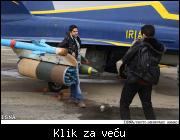 
  
 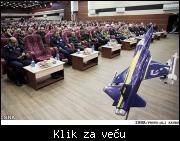 
  
 
|

